 W
WAdela of Normandy, of Blois, or of England, also known as Saint Adela in Roman Catholicism, was a daughter of William the Conqueror and Matilda of Flanders who later became the Countess of Blois, Chartres, and Meaux by marriage to Stephen II, Count of Blois. Her husband greatly benefited from the increased social status and prestige that came with such a marriage. She brought with her not only her bloodline, but a wedding gift of money and other movable goods from the prodigious store of Anglo-Norman wealth. She was regent of Blois during the absence of her spouse in 1096–1100 and 1101–02, and during the minority of her son from 1102 until 1120.
 W
WAdbelahide, Adele, or Adelaide of Aquitaine, was queen consort of France by marriage to Hugh Capet. Adelaide and Hugh were the founders of the Capetian dynasty of France, and Adelaide had some extent of influence over her husband's governance of France.
 W
WThe County of Forcalquier was a large medieval county in the region of Provence in the Kingdom of Arles, then part of the Holy Roman Empire. It was named after the fortress around which it grew, Forcalquier.
 W
WAdelaide of Leuven was the wife of Simon I, Duke of Lorraine (1076–1138), in what is now France. She was the daughter of Henry III of Leuven and his wife Gertrude of Flanders. After the death of her husband, Adelaide retired to Tart Abbey.
 W
WAdele of Valois was a daughter of Ralph IV of Valois and Adele of Bar-sur-Aube.
 W
WAgnes of Burgundy was Duchess of Aquitaine by marriage to Duke William V and Countess of Anjou by marriage to Count Geoffrey II. She served as regent of the Duchy of Aquitaine during the minority of her son from 1039 until 1044. She was a daughter of Otto-William, Count of Burgundy and Ermentrude de Roucy and a member of the House of Ivrea.
 W
WAimery IV viscount of Thouars was a companion of William the Conqueror on his Invasion of England in 1066.
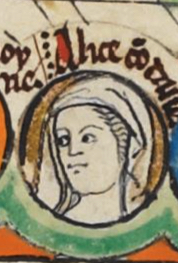 W
WAlice or Adeliza, Adelaide or Aelis was a countess consort of Burgundy, the daughter of Richard II, Duke of Normandy (972–1026) and Judith of Brittany.
 W
WAmadeus III of Savoy was Count of Savoy and Maurienne from 1103 until his death. He was also known as a crusader.
 W
WAnne of Kiev was a Rus' princess who became queen of France in 1051 upon marrying King Henry I. She ruled the kingdom as regent during the minority of their son Philip I from Henry's death in 1060 until her controversial marriage to Count Ralph IV of Valois. Anne founded the Abbey of St. Vincent at Senlis.
 W
WHubert II de Beaumont-au-Maine, also known as Hubert de Sainte-Suzanne, was a French Viscount of Beaumont and Maine, and later of Vendôme. In the 11th century he held the French territories of Beaumont, Fresnay and Sainte-Suzanne.
 W
WBertha of Burgundy was queen of the Franks as the second wife of King Robert II.
 W
WBertha of Holland, also known as Berthe or Bertha of Frisia and erroneously as Berta or Bertrada, was queen of France from 1072 until 1092, as the first wife of King Philip I of France. Bertha's marriage to the king in 1072 was a result of peace negotiations between him and her stepfather, Count Robert I of Flanders. After nine years of childlessness, the royal couple had three children, including Philip's successor, Louis VI. Philip, however, grew tired of his wife by 1090, and repudiated her in 1092 in order to marry the already married Bertrade of Montfort. That marriage was a scandal since both Philip and Bertrade were already married to other people, at least until Queen Bertha died the next year.
 W
WBertrade de Montfort was a queen consort of France by her marriage to Philip I of France.
 W
WDurand de Bredons was a French Benedictine and bishop of Toulouse from about 1058. He was from Bredons in the Auvergne.
 W
WGisela of Burgundy, a member of the royal Elder House of Welf, was Duchess of Bavaria from about 972 to 976 and again from 985 to 995, by her marriage with Duke Henry the Wrangler. She was the mother of Emperor Henry II.
 W
WPope Callixtus II or Callistus II, born Guy of Burgundy, was head of the Catholic Church and ruler of the Papal States from 1 February 1119 to his death in 1124. His pontificate was shaped by the Investiture Controversy, which he was able to settle through the Concordat of Worms in 1122.
 W
WCecile of France was a daughter of Philip I of France and Bertrade de Montfort.
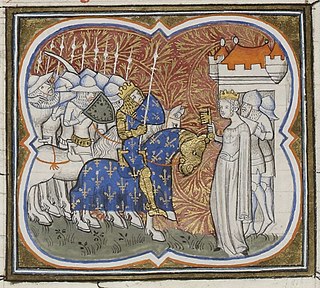 W
WConstance of Arles, also known as Constance of Provence, was queen of France as the third spouse of King Robert II of France.
 W
WConstance of France was the daughter of King Philip I of France and Bertha of Holland. She was a member of the House of Capet and was Countess of Troyes from her first marriage and Princess of Antioch from her second marriage. She was regent during the minority of her son.
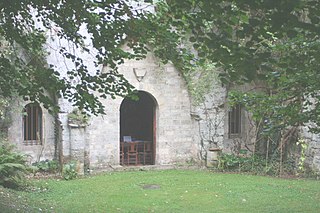 W
WHerluin de Conteville (1001–1066), also sometimes listed as Herlwin of Conteville, was the stepfather of William the Conqueror, and the father of Odo of Bayeux and Robert, Count of Mortain, both of whom became prominent during William's reign. He died in 1066, the year his stepson conquered England.
 W
WElizabeth of Vermandois, was an Anglo-Norman noblewoman, who by her two marriages was the mother of the 1st Earl of Worcester, the 2nd Earl of Leicester, the 3rd Earl of Surrey, and of Gundred de Warenne, mother of the 4th Earl of Warwick.
 W
WErmesinda of Bigorre, born Gerberga or Gisberga, was a Queen of Aragon, a daughter of Bernard-Roger, Count of Bigorre and his wife Garsenda, Heiress of Bigorre. She was a member of the House of Foix, the sister of Bernard II, Count of Bigorre, Roger I, Count of Foix, and perhaps of Stephanie who married García Sánchez III of Navarre.
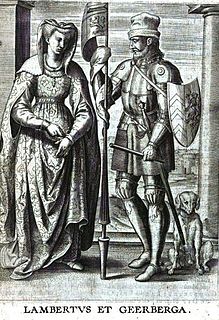 W
WGerberga of Lower Lorraine (975-1019), Countess of Louvain, was the daughter of Charles, Duke of Lower Lorraine, himself the son of Louis IV of France and Gerberga of Saxony. Her mother was Adelaide/Agnes de Vermandois.
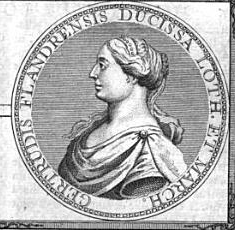 W
WGertrude of Flanders, was a Countess of Louvain and Landgravine of Brabant by marriage to Henry III, Count of Leuven, and a Duchess of Lorraine by marriage to Theodoric II, Duke of Lorraine. At the time the duchy was the upper Lorraine, since 959 separated from the duchy of Lower Lorraine.
 W
WGertrude of Saxony, also known as Gertrude Billung, was a countess of Holland by marriage to Floris I, Count of Holland, and countess of Flanders by marriage to Robert I, Count of Flanders. She was regent of Holland in 1061-1067 during the minority of her son Dirk V, and regent of Flanders during the absence of her spouse in 1086-1093.
 W
WGisèle of France was the daughter of Hugh Capet and Adelaide of Aquitaine. She married Count Hugh I of Ponthieu around 994. Her children by Hugh included Enguerrand I of Ponthieu, Giselberthe de Encre, Alexis de Bernâtre, and Guy of Ponthieu.
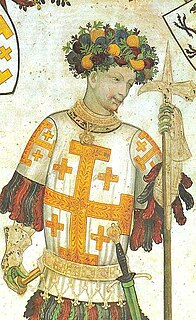 W
WGodfrey of Bouillon was a French nobleman and one of the pre-eminent leaders of the First Crusade. He was the first ruler of the Kingdom of Jerusalem from 1099 to 1100. He apparently avoided using the title of king, choosing instead that of princeps. Older scholarship is more fond of another title, that of "advocatus of the Holy Sepulchre", a secondary title probably used by Godfrey, which is still also preferred by the Catholic Equestrian Order of the Holy Sepulchre of Jerusalem.
 W
WGonçalo Martins de Abreu or Geoffrey Devereux (11th-century) was an Anglo-Norman Knight, who arrived in the Iberian Peninsula with Henry, Count of Portugal.
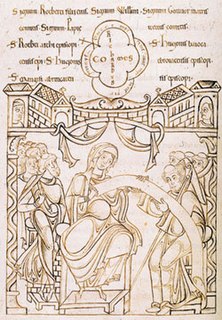 W
WGunnor or Gunnora was the duchess of Normandy by marriage to Richard I of Normandy, having previously been his long-time mistress. She functioned as regent of Normandy during the absence of her spouse, as well as the adviser to him and later to his successor, their son Richard II.
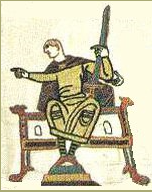 W
WGuy I of Ponthieu was born sometime in the mid-to late 1020s and died 13 October 1100. He succeeded his brother Enguerrand as Count of Ponthieu.
 W
WHerleva was an 11th century Norman woman known for having been mother of William the Conqueror, born to an extramarital relationship with Robert I, Duke of Normandy, and also of William's prominent half-brothers Odo of Bayeux and Robert, Count of Mortain, born to Herleva's marriage to Herluin de Conteville.
 W
WHildegarde of Burgundy was a French noble, Duchess consort of Gascony and Aquitaine by marriage to William VIII, Duke of Aquitaine.
 W
WJoan of Geneva was a Countess Consort of Savoy; married to Amadeus II, Count of Savoy.
 W
WJudith d'Évreux was a Norman noblewoman and Countess of Sicily.
 W
WJudith of Brittany, also called Judith of Rennes (982–1017), was Duchess of Normandy from c. 1000 until her death.
 W
WMatilda of Flanders was Queen of England and Duchess of Normandy by marriage to William the Conqueror, and regent of Normandy during his absences from the duchy. She was the mother of ten children who survived to adulthood, including two kings, William II and Henry I.
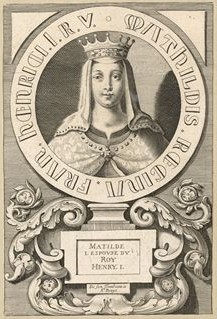 W
WMatilda of Frisia was the first queen of Henry I, King of the Franks. Her date of birth is unknown.
 W
WMaud of Normandy was the daughter of Richard the Fearless and Gunnor. Her siblings were Richard II "the Good", Duke of Normandy, Robert, Archbishop of Rouen, Count of Evreux, died 1037, Mauger, Count of Corbeil, Robert Danus, Emma of Normandy and Hawise of Normandy.
 W
WHedwig of France, also called Avoise, Hadevide or Haltude, was Countess of Mons. She was the daughter of Hugh Capet, the first King of France, and his wife, Queen Adelaide of Aquitaine.
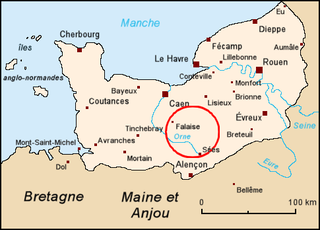 W
WRoger de Montgomery, seigneur of Montgomery and vicomte of the Hiémois.
 W
WPeter the Hermit was a priest of Amiens and a key figure during the First Crusade.
 W
WRamon Berenguer III the Great was the count of Barcelona, Girona, and Ausona from 1086, Besalú from 1111, Cerdanya from 1117, and count of Provence in the Holy Roman Empire, from 1112, all until his death in Barcelona in 1131. As Ramon Berenguer I, he was Count of Provence in right of his wife.
 W
WRashi's daughters were the three daughters and only children of the medieval Talmudic scholar, Rashi and his wife Rivka. Their three daughters were Yocheved, Miriam and Rachel. They each married their father's finest students and were the mothers of the leaders of the next generation of French Talmudic scholars. Almost every Ashkenazi rabbinic dynasty traces its ancestry back to either Yocheved or Miriam, and the majority of the tosafists, were recent descendants of Rashi's daughters. All born in Troyes, France, their descendants inhabited Germany, France, and Italy in the early 11th to 15th centuries, with the majority later moving to Eastern Europe, where they established several notable rabbinic dynasties.
 W
WRozala of Italy was, by her successive marriages, countess of Flanders and queen of the Franks. She was regent of Flanders in 987-988 during the minority of her son.
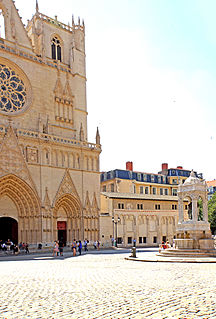 W
WGébuin was an archbishop of Lyon who served 1077 to 1082.
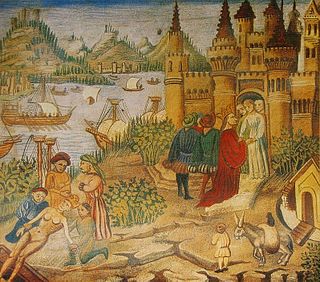 W
WSibylla of Conversano was a wealthy Italian heiress, Duchess of Normandy by marriage to Robert Curthose. She was regent of Normandy during the absence of her spouse.
 W
WStephen, often referred to as Stephen of Blois, was King of England from 22 December 1135 to his death. A younger son of the Count of Blois, he was Count of Boulogne jure uxoris from 1125 until 1147 and Duke of Normandy from 1135 until 1144. His reign was marked by the Anarchy, a civil war with his cousin and rival, the Empress Matilda, whose son, Henry II, succeeded Stephen as the first of the Angevin kings of England.
 W
WPope Sylvester II, originally known as Gerbert of Aurillac, was a French-born scholar and teacher who served as the bishop of Rome and ruled the Papal States from 999 to his death. He endorsed and promoted study of Arab and Greco-Roman arithmetic, mathematics, and astronomy, reintroducing to Europe the abacus and armillary sphere, which had been lost to Latin Europe since the end of the Greco-Roman era. He is said to be the first to introduce in Europe the decimal numeral system using the Hindu–Arabic numeral system.
 W
WUmberto II, nicknamed the Fat, was Count of Savoy from 1080 until his death in 1103. He was the son of Amadeus II of Savoy.
 W
WPope Urban II, otherwise known as Odo of Châtillon or Otho de Lagery, was the head of the Catholic Church and ruler of the Papal States from 12 March 1088 to his death. He is best known for initiating the Crusades.
 W
WVital of Bayeux was a knight of William the Conqueror, known from the Bayeux tapestry and the Domesday Book.
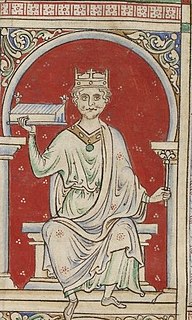 W
WWilliam II, the third son of William the Conqueror, was King of England from 26 September 1087 until 2 August 1100, with powers over Normandy, and influence in Scotland. He was less successful in extending control into Wales. William is commonly referred to as William Rufus, perhaps because of his ruddy appearance or, more likely, due to having red hair as a child that grew out in later life.
 W
WWilliam of Bellême called William Princeps, was the Seigneur of Bellême and a member of the House of Bellême.